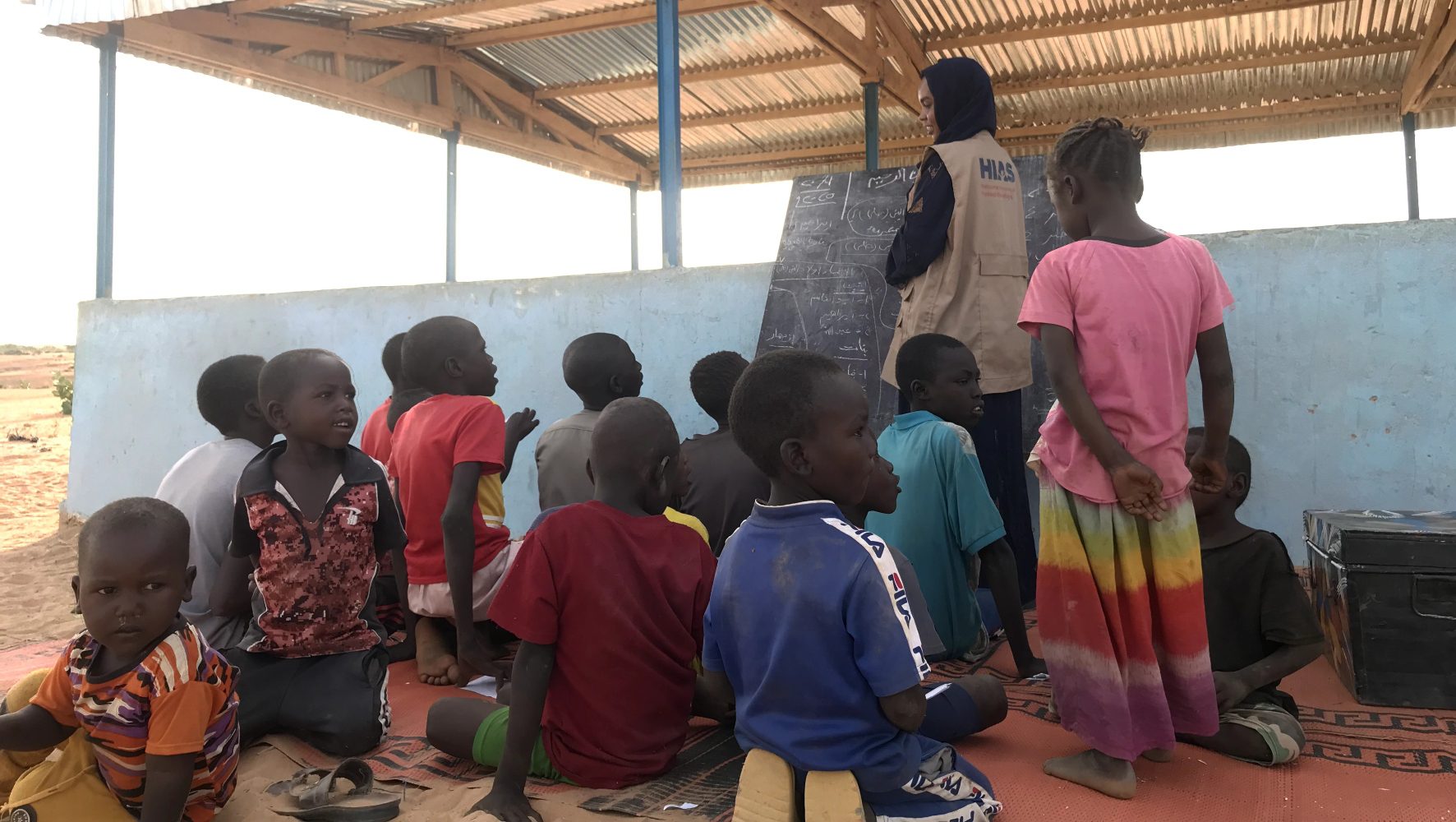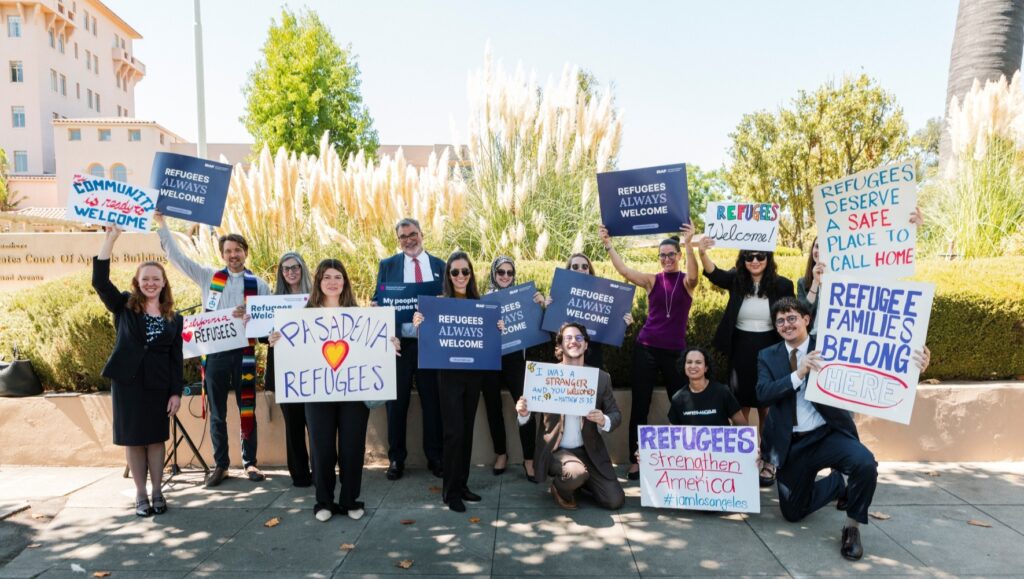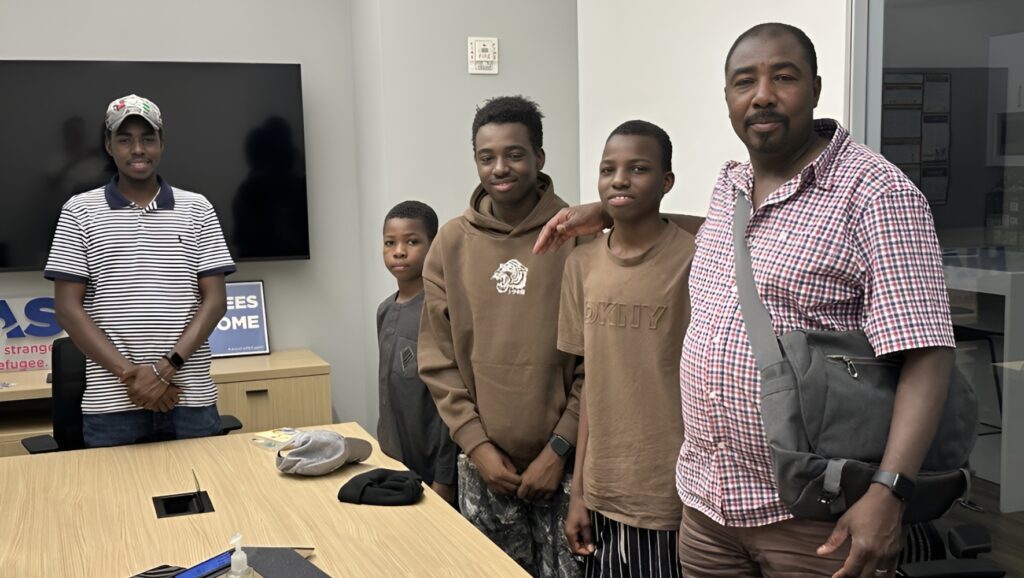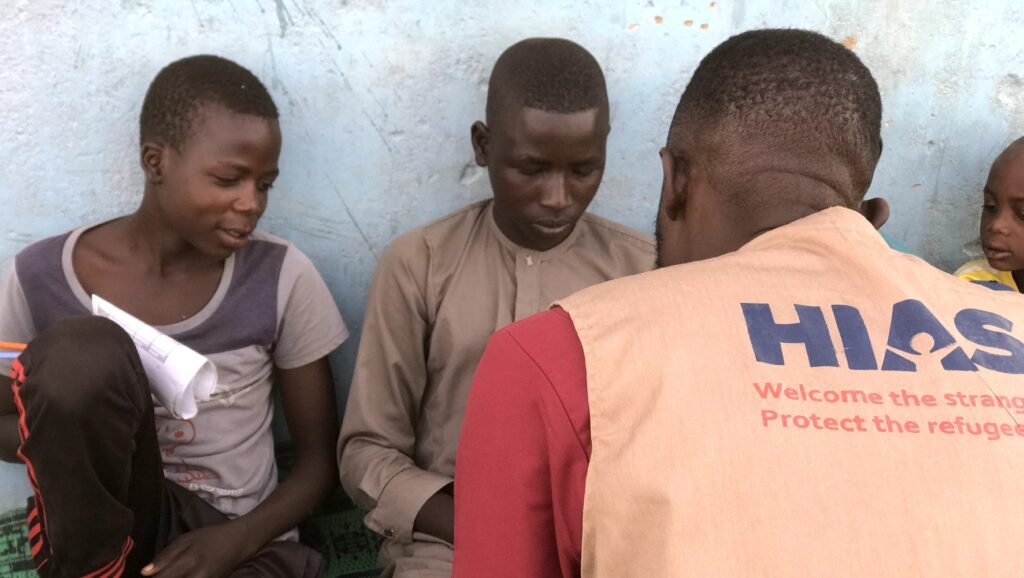
The civil war in Sudan, which began two years ago today, has caused the world’s gravest humanitarian crisis. Fighting between the Sudanese government and a paramilitary organization known as the Rapid Support Forces have displaced over 13 million people throughout the country. Nearly a million Sudanese have crossed into Chad, settling in refugee camps dotting the country’s eastern border. There, they have joined an existing population of refugees, some of whom have resided in the camps for nearly 20 years.
Amid this extraordinarily challenging context, HIAS continues to provide services to displaced people throughout the country — as we have for two decades. With Sudan’s civil war now entering its third year, we spoke to our colleagues on the ground in Chad about what they’re seeing.
How many Sudanese refugees is HIAS working with in Chad at the moment? How many people, total, are in the camps in eastern Chad? What services are we providing?
Since the start of Sudan’s civil war, camps in eastern Chad have hosted over 772,000 new and over 216,000 returning refugees, mostly women and children. This is on top of a population of 350,000 or so living in camps prior to the war. HIAS is active in nine camps in eastern Chad.
HIAS is currently implementing two projects in Chad that have impacted over 63,000 people, combined. These projects have a lot of components: child protection, violence against women and girls, mental health support, economic inclusion, food security, nutrition, vocational training, and entrepreneurship.
How have the recent changes in the Sudanese civil war — the Sudanese government recapturing part of Khartoum — likely to affect refugee flows to eastern Chad?
Just over 40,000 refugees have arrived in Chad this year. The flow of people has decreased lately, due in part to Ramadan, a period in which fighting tends to be less intense. But soldiers have also blocked roads throughout Sudan, forcing people to travel on dangerous routes to escape the country. Traveling is just very risky right now.
How have the Trump administration’s cut to foreign aid affected our work in Chad? What are the humanitarian consequences?
The foreign aid cuts have had a serious impact on many aspects of work, most notably for mental health and psychosocial services. Many refugees in the camps depended on U.S. funding for their livelihood and will face severe consequences without it. In the Adre Camp, for example, we’ve encountered many signs of deteriorating conditions. Some refugee women have turned to sex work in order to stay afloat. One woman told a peer educator that she had a choice between either “having sex for a living or allowing her children to die due to a lack of food and other life-saving necessities.” Stories like this now abound throughout eastern Chad.


